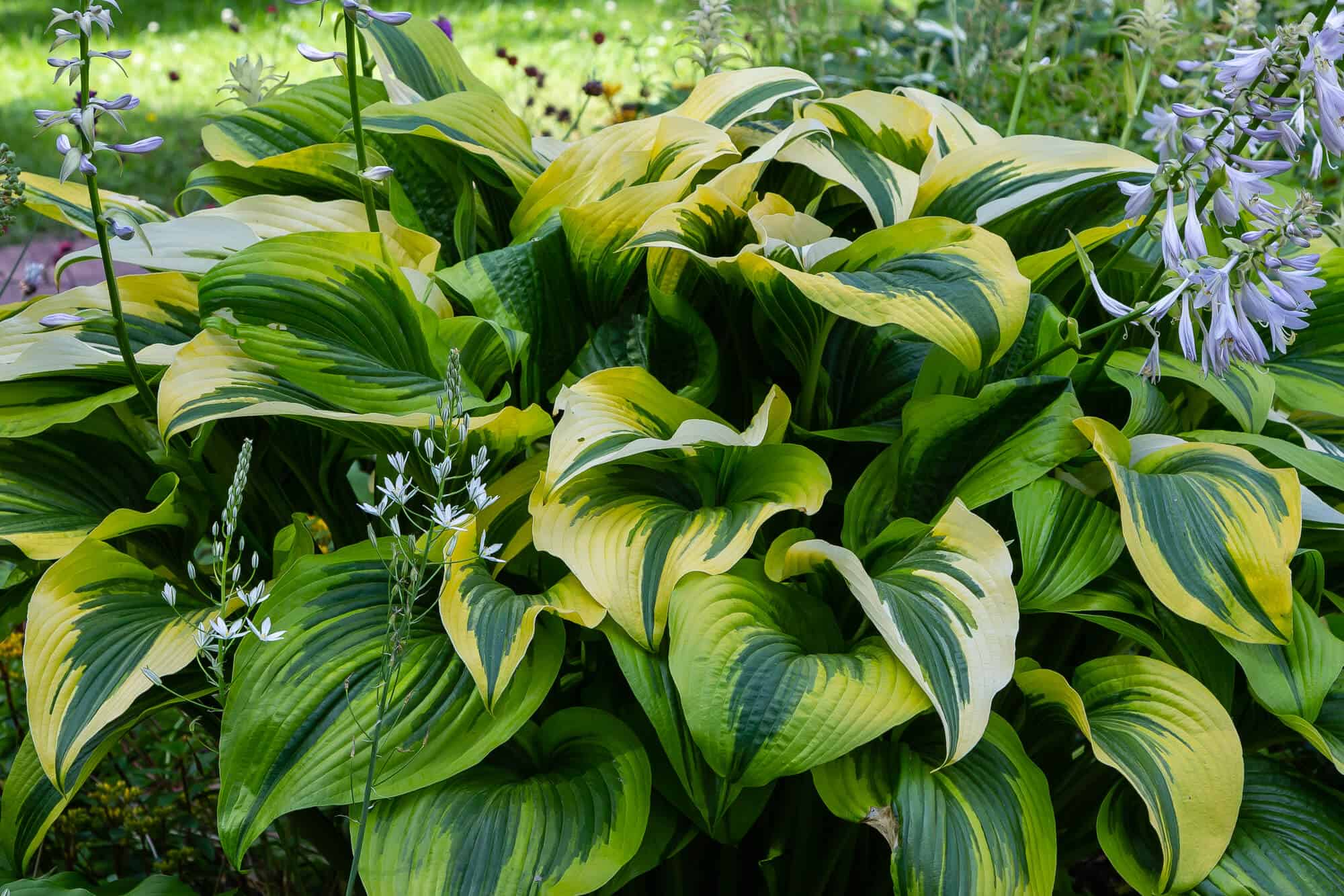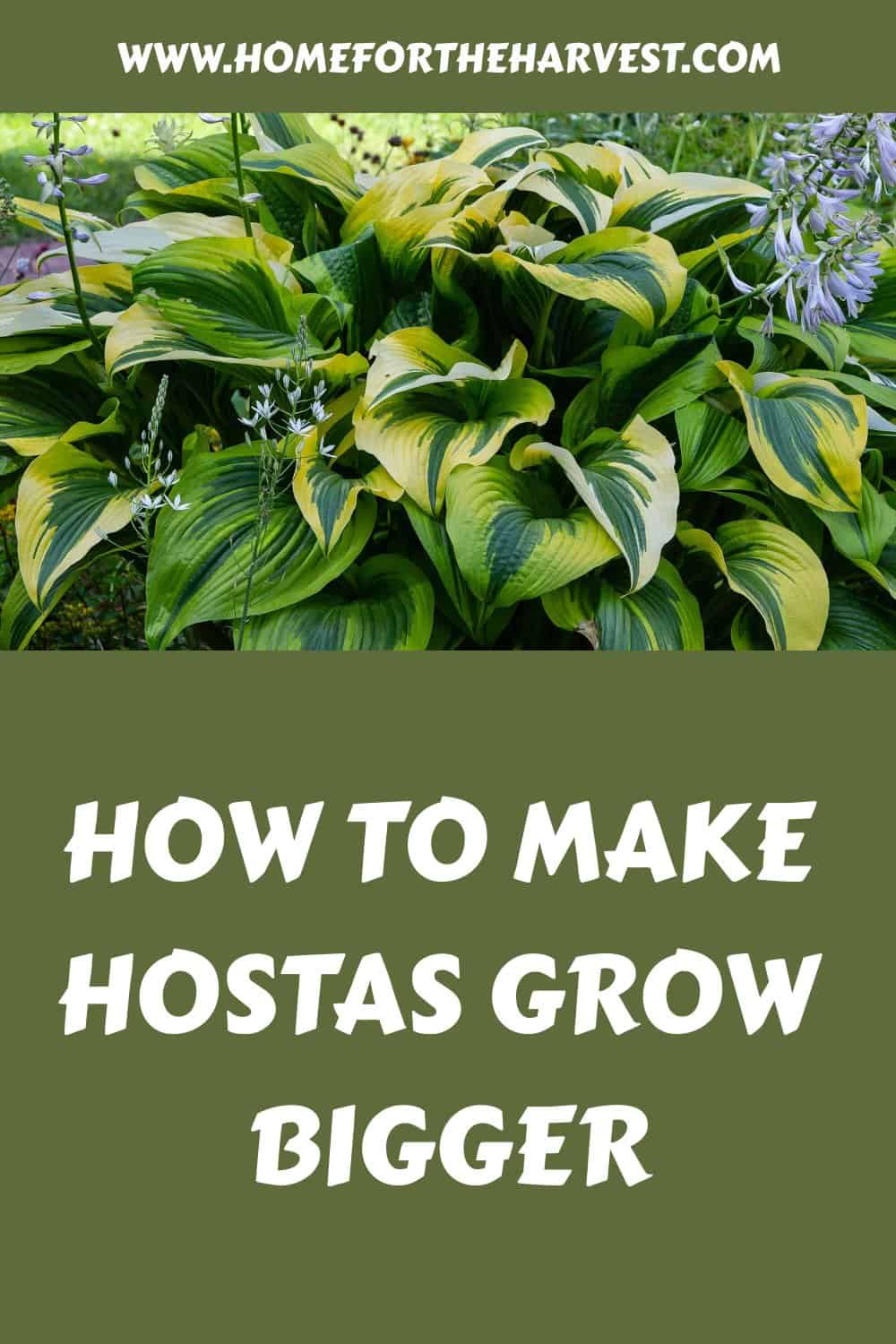Sometimes, hostas seem to grow at a slower rate when compared with other plants. Fortunately, there are quite a few things you can do to encourage more vigorous growth from your plants.
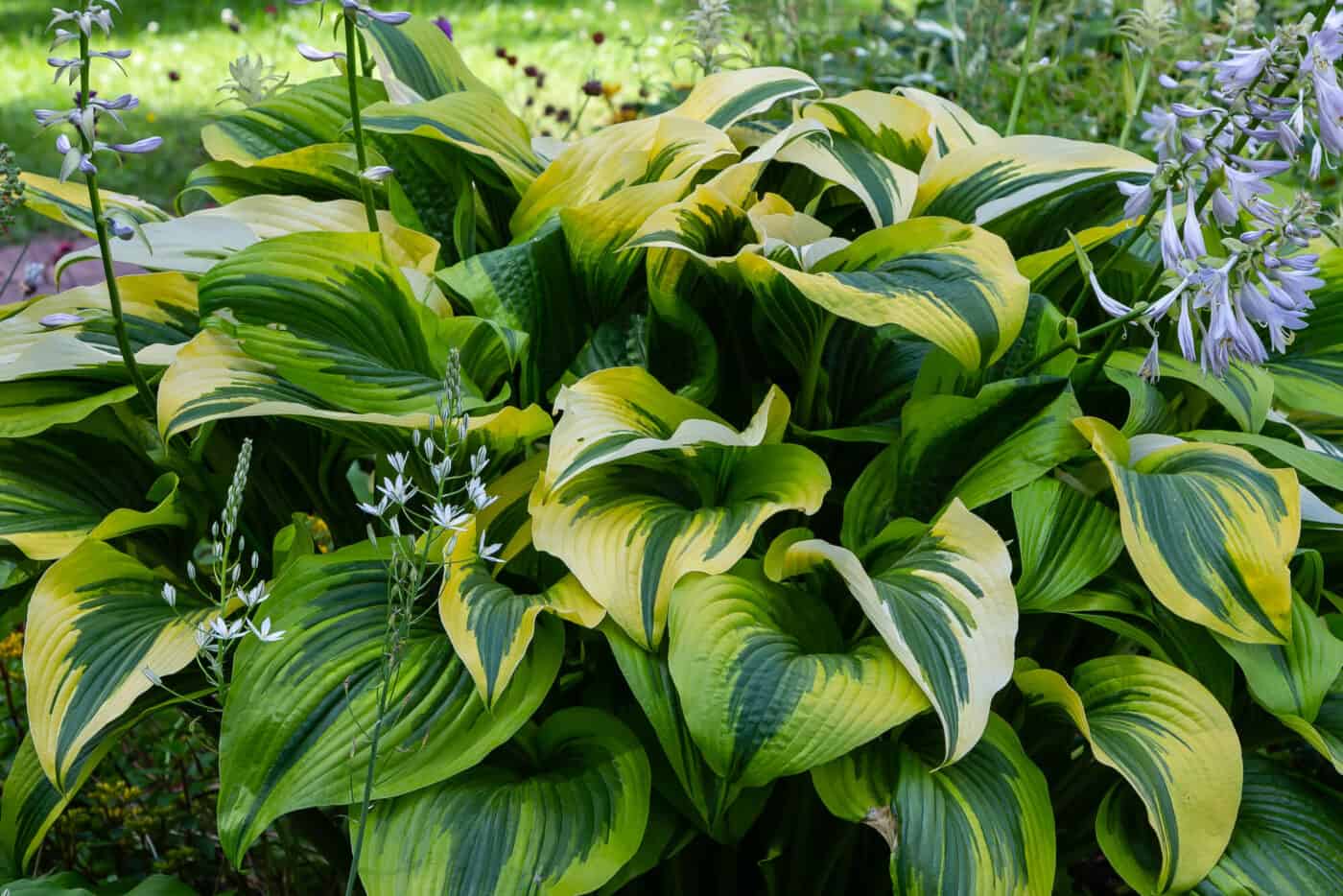
How to help make hostas grow bigger
To grow big hostas, start with a cultivar with the genetics to naturally want to grow to a large size. Plant it in rich soil that will provide key nutrients, and keep it well-watered and fertilized as necessary. You’ll also want to make sure to give them some direct sunlight in the morning if possible but protect them from harsh afternoon rays.
1. Opt for naturally large varieties
Hostas come in many sizes. So, if you’re looking to grow large hostas, start with a variety known for its expected mature size.
Here are some of the most popular large hosta cultivars:
On average, most of these species can grow six feet in diameter and have a height of more than 30 inches. Here are more giant hosta varieties to choose from.
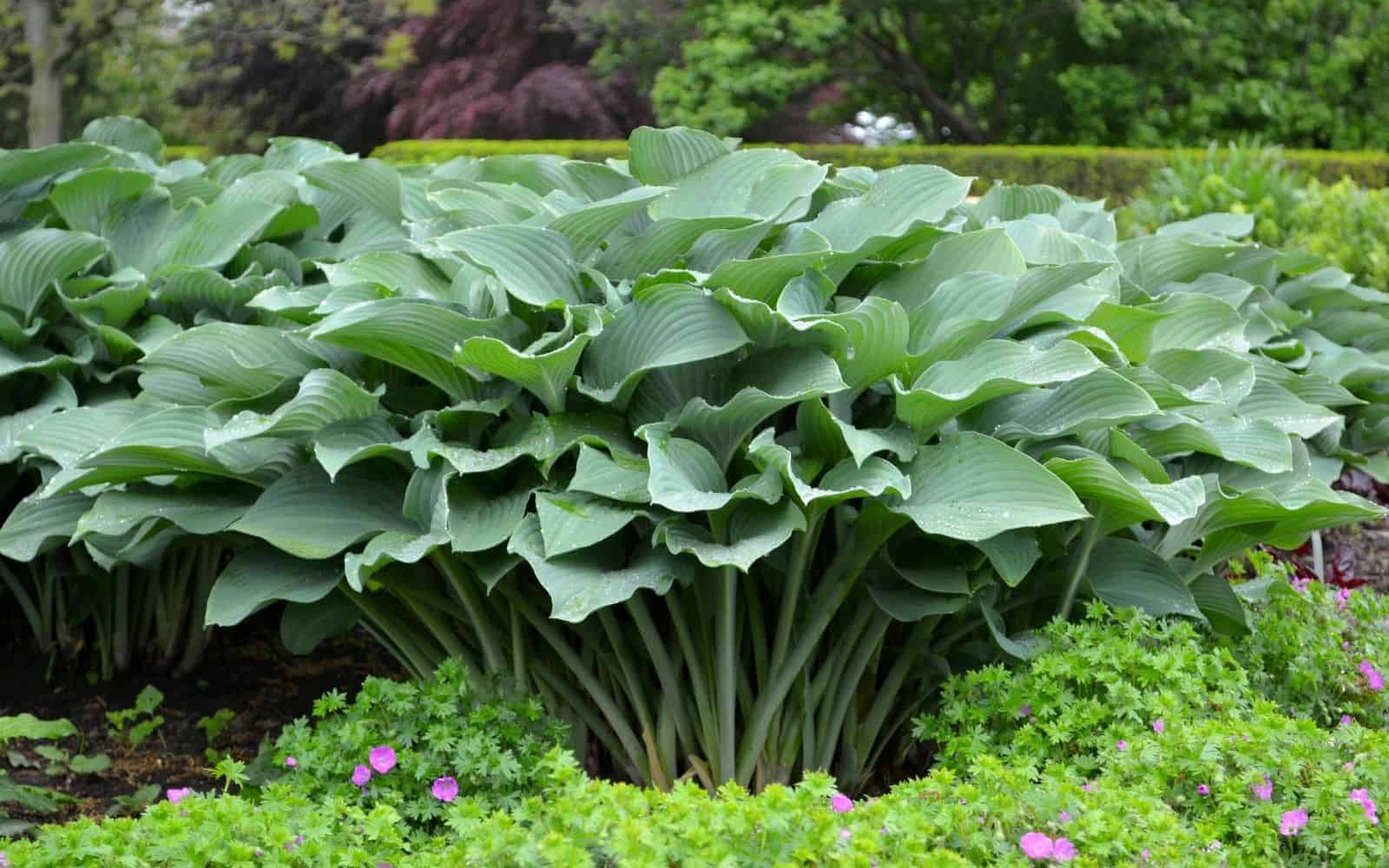
2. Give them space
Giving your plants room to grow will enable them to grow big and strong. Hostas require room for leaf expansion. Furthermore, the roots need space to expand and prevent crowding. This collects water and nutrients from the soil, thus encouraging faster growth.
The easiest method to do this is to leave at least five feet of space (circle diameter) for the plant to eventually fill in. You can fill the empty space around the young plant with annuals until the hosta is well established.
3. Enrich the soil
Good soil contains the nutrients that hosta plants need to thrive. Therefore, your plants need healthy soil to flourish and grow.
Most gardeners prepare their soil before planting hostas by mixing in organic matter. You should also pay attention to the pH level of the soil. Hostas prefer to be in neutral to slightly acidic soil.
Avoid using conventional non-organic fertilizers. Instead, use organic fertilizers as they produce the ideal soil for hostas. In addition, they contain the microorganisms that plants need to thrive.
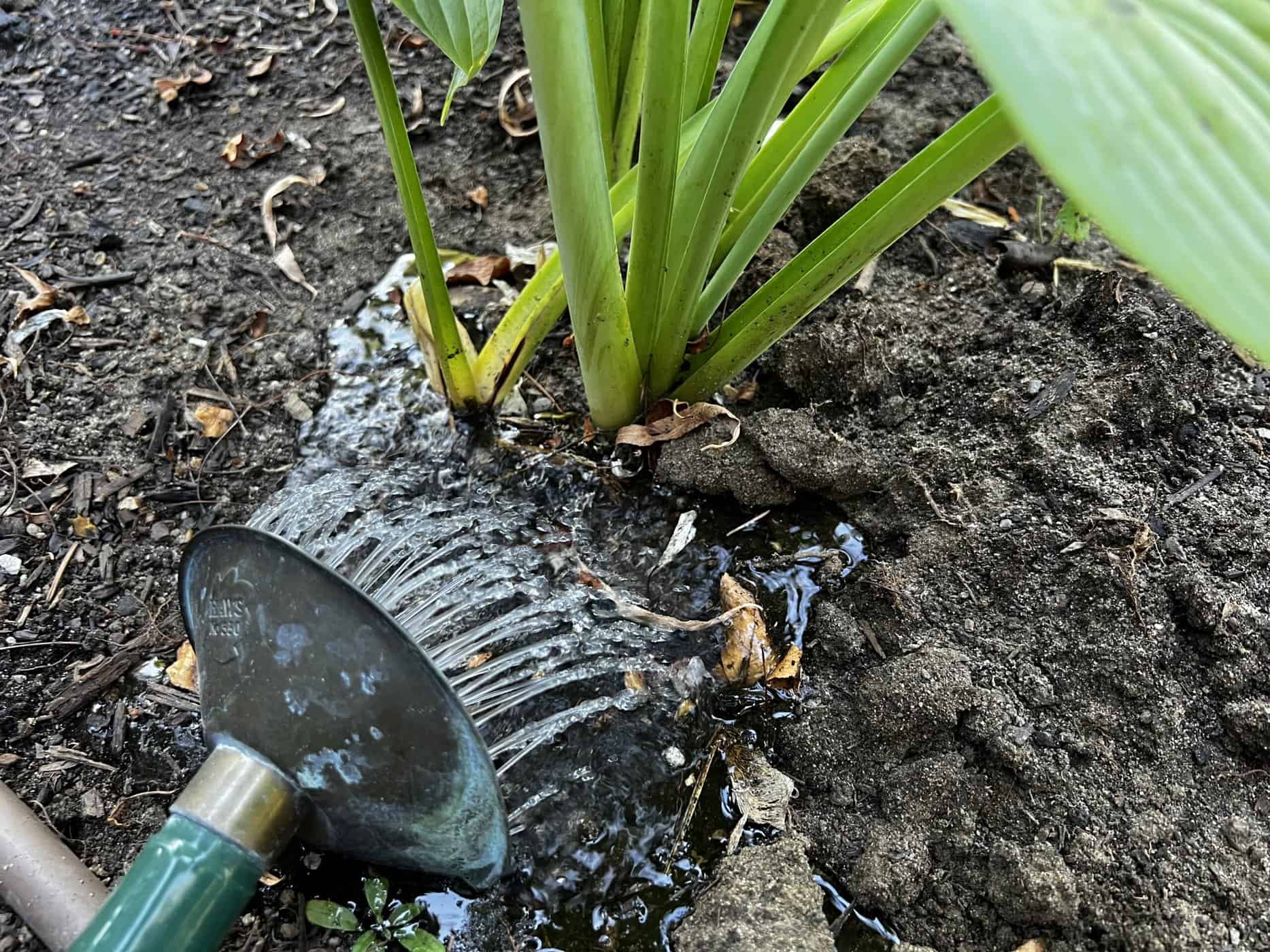
4. Water them consistently
Luckily, hostas are low-maintenance plants that don’t need much attention. However, like all plants, they require water to survive.
Even though hostas can withstand droughts once established, they prefer damp, well-drained soil. This means that the soil should have some water in it but also small pockets of air (kind of like a wrung-out sponge). Hostas can stop growing and blooming if they don’t get the water they need.
Hostas that have just been planted require regular watering every day over the first two weeks. Then, water them only once a week to avoid root rot. They may need more frequent watering during hot spells during the first year or two, but after that, they should be quite tolerant to drought.
Also, try to water them early in the morning. This helps prevent the moisture from evaporating too quickly in the sun, thus enabling better absorption.
5. Consider letting them get some direct sunlight
Despite their reputation for their adaptability in the shade, hostas still require sunlight to grow and produce energy. Their foliage is brighter and thicker when exposed to sunlight, not to mention it grows faster as well. Direct morning sun is far preferable to harsh afternoon sunlight.
You should use caution, though, since too much sunlight can result in sunburned leaves. This is especially true for blue-leaved varieties, which should only be given limited direct sunlight in the morning. It can also cause their colors to fade and become a dull shade of green.
6. Feed them with a high-quality hosta fertilizer
Big hostas need more nutrients more often than smaller plants. So, it makes sense to use fertilizer to provide extra nourishment to the big plants.
You can use a hosta fertilizer or all-purpose plant food with a balanced NPK. First, nourish your hosta plants in the spring when they’re just beginning their growing season. Then, repeat once more after a month. Finally, give them one final fertilizer feeding in the middle of August. Here are more details about when to fertilize hostas.
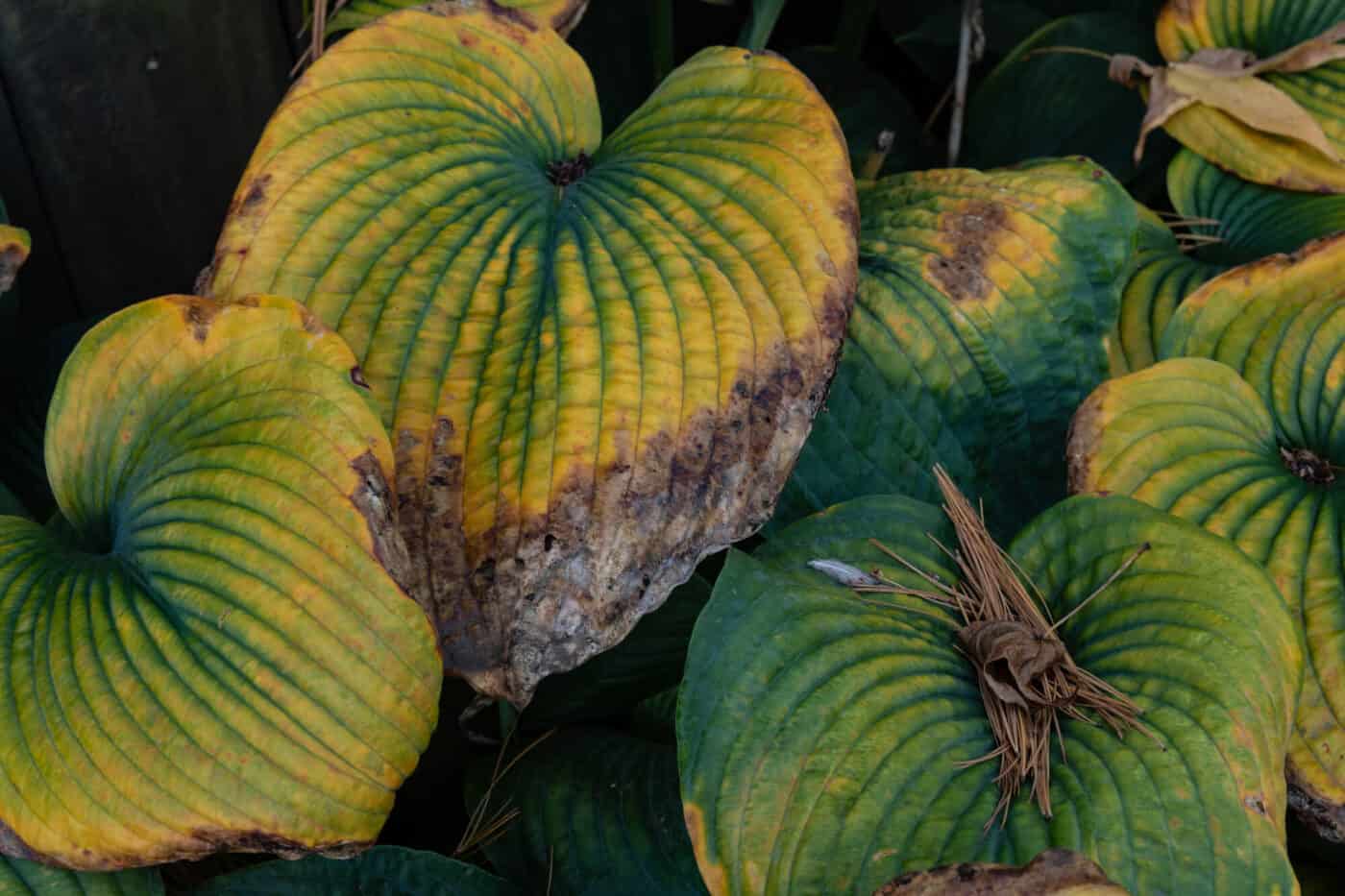
What to avoid when growing big hostas
Avoid doing a few things to make sure the plant develops into a large, thriving plant.
1. Avoid removing foliage
Don’t cut back your hostas until all the leaves have died back to the ground in the fall. In mild zones, you’ll notice that your plants have a lot of straggly leaves by the end of winter. Yet, don’t be in a rush to remove them right away.
Leave as many leaves on the plant as possible (for as long as possible). This is because the plant uses its leaves to create the energy it needs to grow larger. Removing leaves that are functioning removes their potential to create energy.
2. Don’t divide your hostas
Typically, people divide plants to control the plant’s size, to create more individual plants, or to give the mother plant space to flourish. However, this process won’t be effective if you’re planning on growing large hostas.
Dividing your hosta plants means you’ll have smaller plants that will take twice as long to grow. Instead, plant the hosta in its forever home, and don’t disturb the roots after planting. Leaving the roots untouched (no transplanting) will lead to a larger plant in a shorter amount of time.


